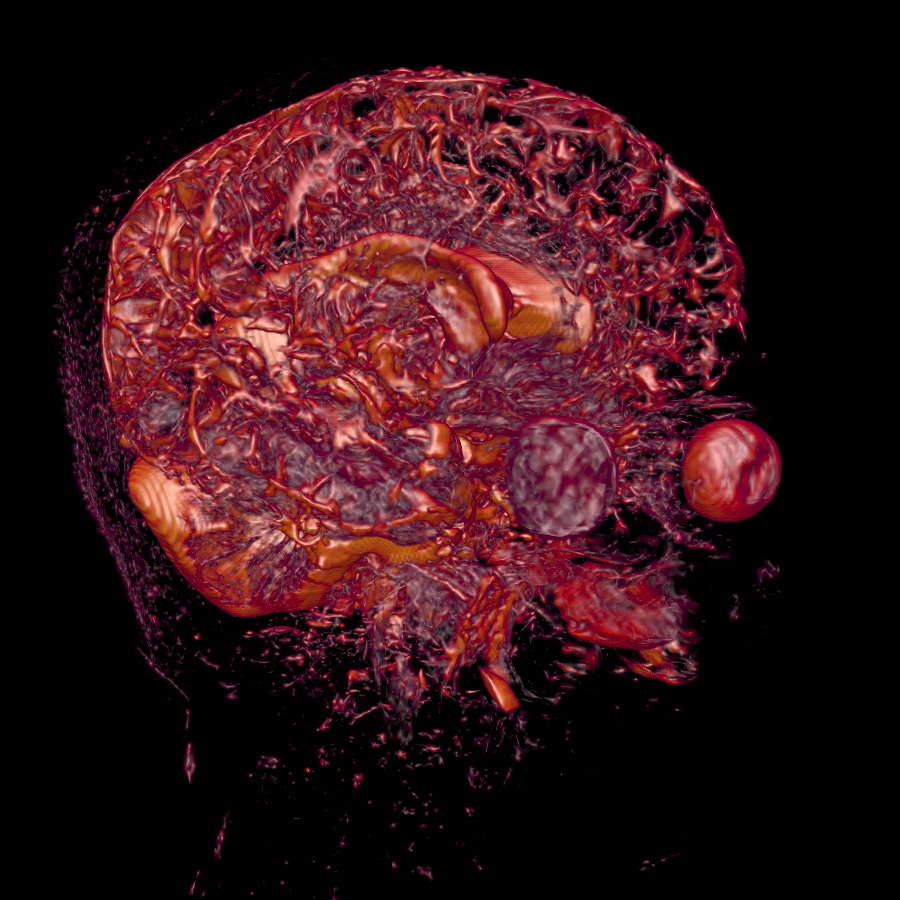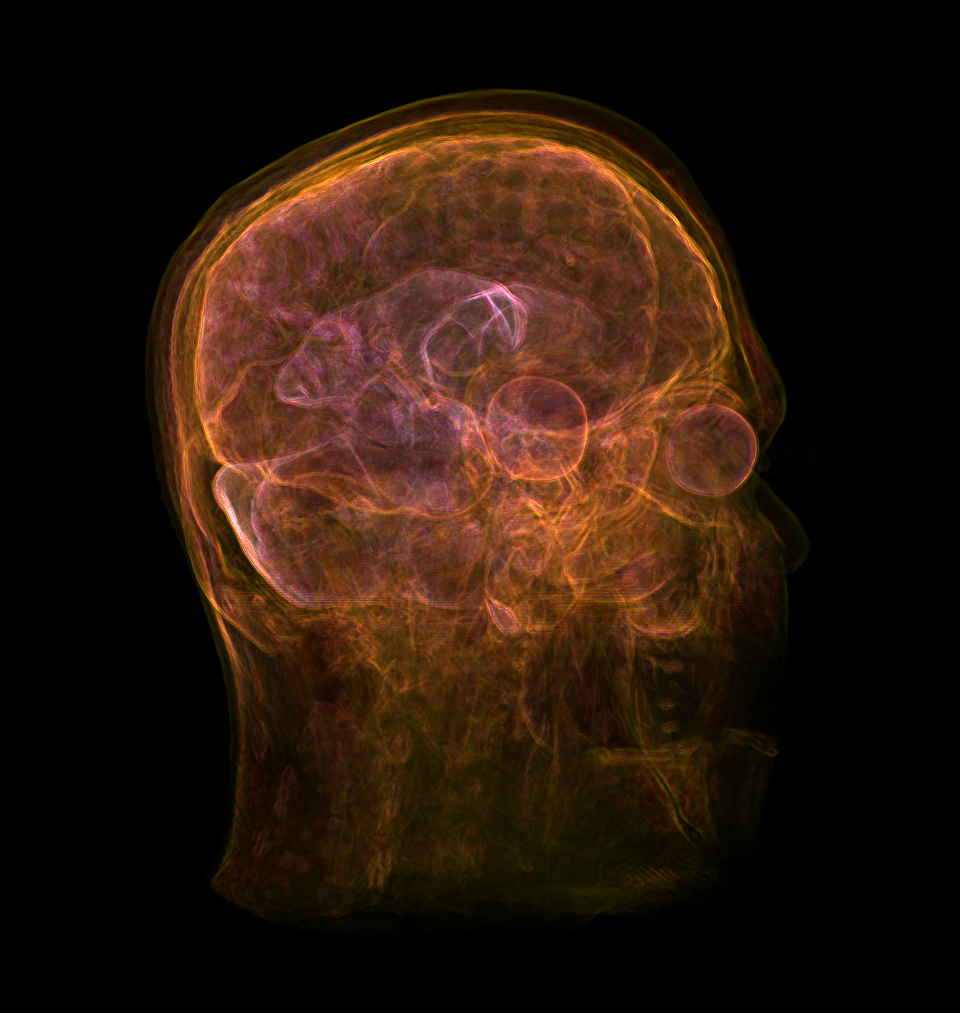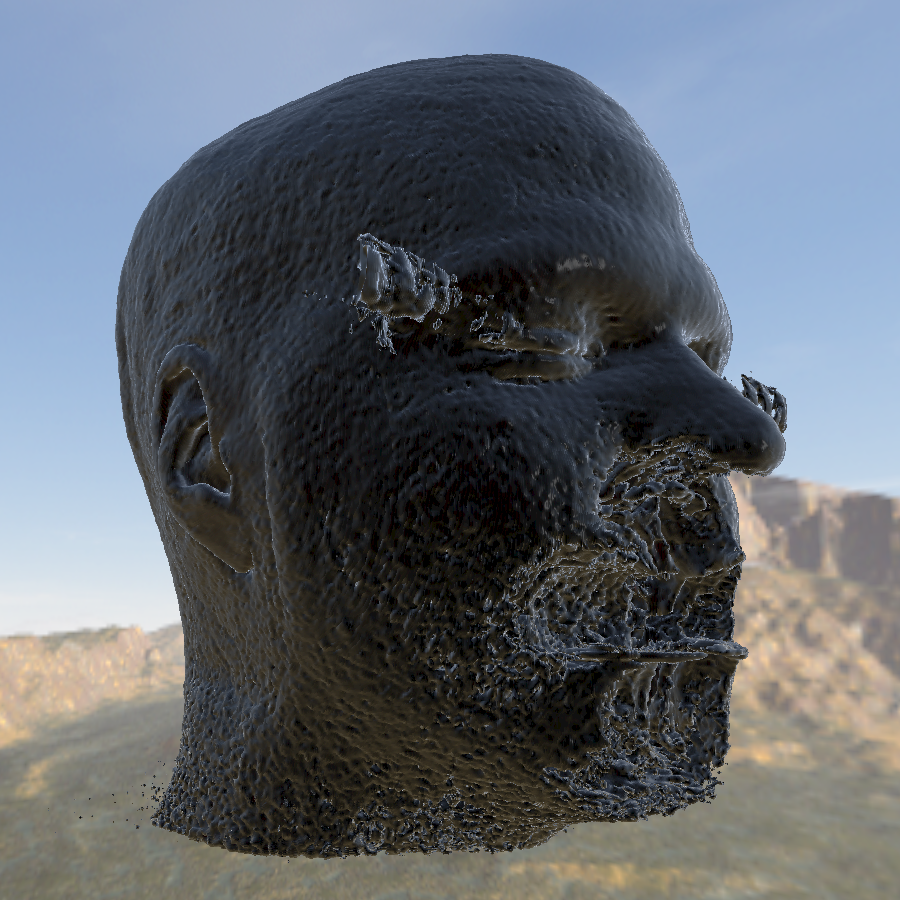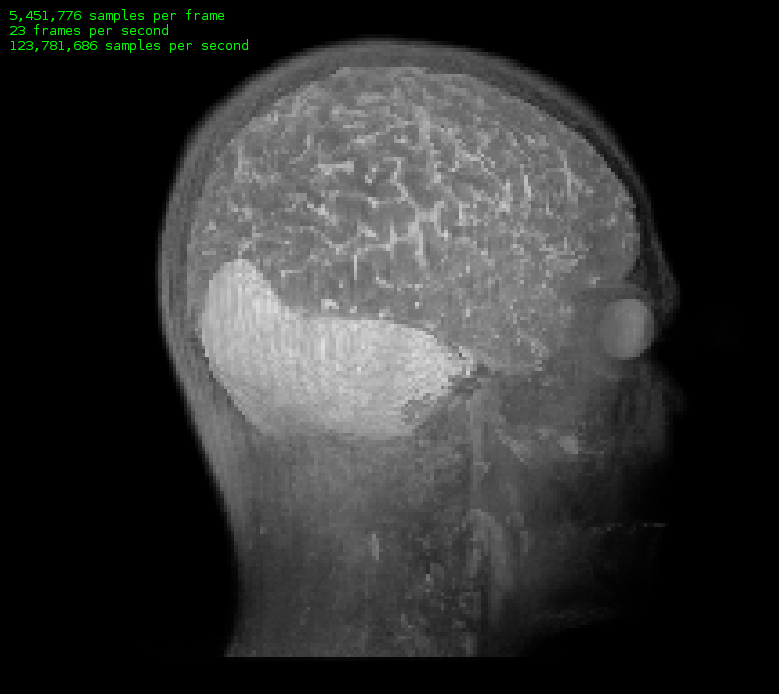This project aims to develop a powerful real-time volume rendering engine for the browser.
This is accomplished using volume ray casting, implemented in WebGL 2.
A variety of shaders exist, from basic maximum-intensity projection to photorealistic graphics.
I am planning to implement a better way to do this, but for now, you'll have to clone the project and edit the code to add your own images.
First, have a look at webgl2/images/sagittal.png.
Slices from the image data are tiled into one image top-down, then left-right.
Multiple columns are sometimes necessary because browsers have limits on the maximum size of a <canvas> element.
To generate such an image, ImageMagick is a powerful tool.
Once you have generated your image, add an entry to the volumes variable in webgl2/js/raycasting.js:
var volumes = {
sagittal: { // any variable name
src: "./images/sagittal.png" // path to your image
,name: "Brain - Water" // a (somewhat) descriptive name
,columns: 2 // number of columns by which your tiles are arranged
,slices: 176 // number of total image slices
,zScale: 0.7 // ratio of distance between slices to distance between pixels
}
// ...
}When you refresh the page, you should now see your volume in the drop down list.
For testing, there's a volume generator, which might also be interesting for other projects working with volume data.
Before implementing this project in WebGL, I wrote a volume renderer in pure CPU-side, single-threaded JavaScript.
With some tweaking, I managed to get it running at 60fps on my old ThinkPad.
This project is the successor of earlier experiments with volume rendering by drawing point clouds:
GitHub, Web
This is an experimental project developed by someone who has no real experience or training in medical imaging.
It is not intended or suitable for clinical use.



